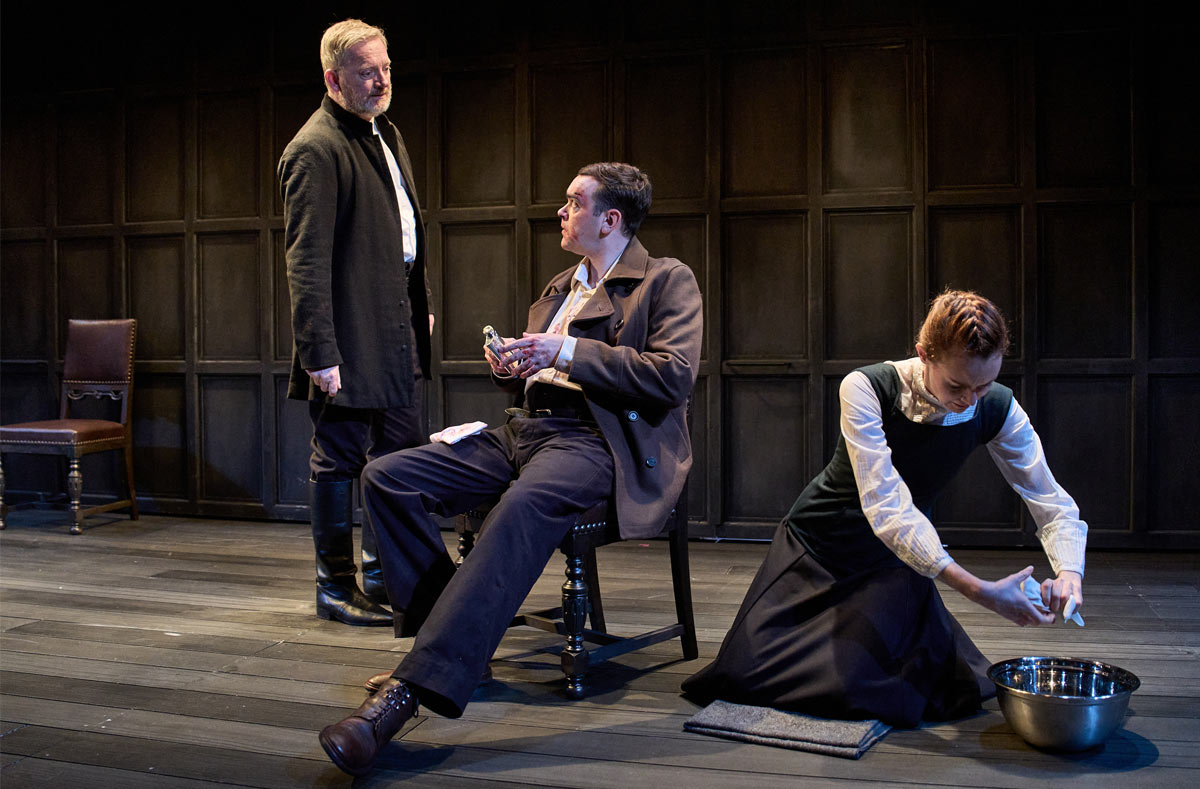Review: MARY at the Hampstead Theatre
For a woman who was executed aged 44 more than four centuries ago, there remains an extraordinarily healthy fascination with Mary Queen of Scots, her life, loves, apparent political miss-steps and legacy. Much has been written over the centuries — overwhelmingly by men and through a male power prism — invariably gaslighting Mary’s vulnerability as misguided passion resulting in ill-considered alliances conceived through little more than lust.
 Douglas Henshall (James Melville) Brian Vernel (Thompson) Rona Morison (Agnes) in Mary at Hampstead Theatre. Credit Manuel Harlan
Douglas Henshall (James Melville) Brian Vernel (Thompson) Rona Morison (Agnes) in Mary at Hampstead Theatre. Credit Manuel Harlan
Taking up the cudgels in her behalf, Rona Munro has applied her forensic mind, eschewed the usual romanticised faff and concentrated her background research on verifiable facts and contemporary eye-witness accounts specifically in relation to Lord Bothwell’s well-documented abduction of Mary as she returned from Stirling and the resultant chaos which ensued. The playwright draws a perhaps unsurprising conclusion that those who made their grab for power during Mary’s lifetime, used the ill-fated Queen without mercy or respect.
At the centre of the play is James Melville, (Douglas Henshall) a staunch and loyal ally to Mary whose first hand accounts written from 1603 until his death in 1617, have informed many a scholarly work on this most tumultuous period in Scotland’s history. His moral fortitude as loyal supporter and guide to the Queen, form the bedrock for the play’s uncomfortable narrative which finds two fictional characters Agnes (Rona Morison) and Thompson (Brian Vernel) disputing and calling into question her behaviour, choices and ultimately, her suitability to rule. Their own opinions and contributions to the historical situations equate to the common man or woman of the period and the widely held beliefs which remained unchallenged in her day and have rarely been properly evaluated since.
Director Roxana Silbert has worked with designer Ashley Martin-Davis to create a dour panelled backdrop with atmospheric lighting and simple Protestant furniture so that the audience’s focus is never allowed to wander far from the rapier dialogue and emotional tension which results from discussion of Mary’s predicaments and intentions whilst always under the protection and/or control of men with their eye on the crown. By the end, few would dispute that she was rarely anything but a pawn whose very survival was a matter of submission when required, wits and luck — although it would be difficult to imagine a more unfortunate historical figure, which is perhaps why there continues to be such a fascination with the spiral of events which ultimately led to her demise.
Latest News

 New musicals to watch in London in 2026
28 December 2025 at 11:24
New musicals to watch in London in 2026
28 December 2025 at 11:24

 New plays to watch in London in 2026
28 December 2025 at 09:24
New plays to watch in London in 2026
28 December 2025 at 09:24

 Daniel Breaker joins West End production of Hadestown
26 December 2025 at 21:46
Daniel Breaker joins West End production of Hadestown
26 December 2025 at 21:46

 London Productions 2025 - A Year in Review
26 December 2025 at 21:11
London Productions 2025 - A Year in Review
26 December 2025 at 21:11